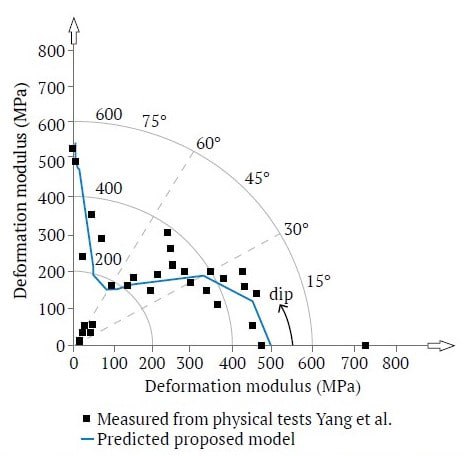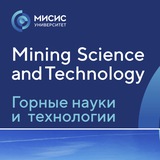group-telegram.com/MinSciTech/529
Last Update:
How to determine the deformation modulus and anisotropy in blocky rock masses?
🔹 In a study published in Mining Science and Technology (Russia), the authors investigated the anisotropic behavior of blocky rock masses. They employed the discrete element method to model and analyze the deformation modulus as a function of loading direction, joint properties, and intact rock characteristics.
🔹 Key Findings:
✔️ The deformation modulus depends on the Joint Roughness Coefficient (JRC) and the Uniaxial Compressive Strength (UCS) of the intact rock.
✔️ The influence of joint roughness on the deformation modulus is three times greater than that of intact rock strength.
✔️ The degree of anisotropy in the deformation modulus ranged from 1.6 ≤ Rₑ ≤ 2.5, with an average value of 1.88.
✔️ During joint sliding failure, the yield strain (0.2–0.4) is independent of the loading angle (θ) and the orientation of the third joint set (α).
🔹 Practical Applications:
The results enable the prediction of rock mass behavior without costly field tests, which is crucial for designing tunnels, boreholes, and other geotechnical structures.
Read the full study in Mining Science and Technology (Russia):
📌 Ahrami O., Javaheri Koupaei H., Ahangari K. Determination of deformation modulus and characterization of anisotropic behavior of blocky rock masses. Mining Science and Technology (Russia). 2024;9(2):116–133. https://doi.org/10.17073/2500-0632-2023-08-143
🔔 Subscribe to our Telegram channel: www.group-telegram.com/us/MinSciTech.com
#InEnglish #MST #anisotropy #deformation #modulus #mass #rocks #loading #fracture #stiffness #strength #shear #resistance #stress #displacement #sliding #quartz #modeling #coefficient #index #blocks #deformations #material #surface #structure #boundary #experiment #geomechanics #JRC #UCS #GSI #simulation
BY Mining Science and Technology (Russia)

Share with your friend now:
group-telegram.com/MinSciTech/529
